Connect With Us
Blog
Foot Exercise to Maintain the Feet During Marathon Season
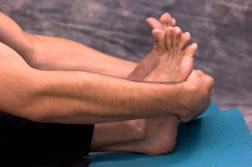 Cooler weather makes for prime conditions for marathon season, when runners will be out training to their fullest. To ensure that the feet are kept in top shape, there are a simple set of eleven exercises one can follow. Toe flexion, ankle dorsiflexion, ankle eversion, ankle plantarflexion, rotating the ankles, wiggling the toes, curling the toes, spreading the toes, pointing the toes out, pointing the toes in, and the butterfly stretch can all stretch the feet and add support and strength. For optimal results, exercise using a Thera-band.
Cooler weather makes for prime conditions for marathon season, when runners will be out training to their fullest. To ensure that the feet are kept in top shape, there are a simple set of eleven exercises one can follow. Toe flexion, ankle dorsiflexion, ankle eversion, ankle plantarflexion, rotating the ankles, wiggling the toes, curling the toes, spreading the toes, pointing the toes out, pointing the toes in, and the butterfly stretch can all stretch the feet and add support and strength. For optimal results, exercise using a Thera-band.
Exercising your feet regularly with the proper foot wear is a great way to prevent injuries. If you have any concerns about your feet contact one of our podiatrists of The Podiatry Center, P.C.. Our doctors will treat your foot and ankle needs.
Exercise for Your Feet
Exercise for your feet can help you to gain strength, mobility and flexibility in your feet. They say that strengthening your feet can be just as rewarding as strengthening another part of the body. Your feet are very important and often we forget about them in our daily tasks. But it is because of our feet that are we able to get going and do what we need to. For those of us fortunate not to have any foot problems, it is an important gesture to take care of them to ensure its good health in the long run.
Some foot health exercises can include ankle pumps, tip-toeing, toe rise, lifting off the floor doing reps and sets, also flexing the toes and involving the shins may help too. It is best to speak with your doctor regarding how to do these fitness steps and how often is right for you. Everyone’s needs and bodies are different and it varies from individual to individual to determine what should be done for you to maintain strength in your feet.
Once you get into a routine of doing regular exercise, you may notice a difference in your feet and how strong they may become.
If you have any questions, please feel free to contact our office located in Millburn, NJ. We offer the newest diagnostic tools and technologies to treat your foot and ankle needs.
Different Treatments for Heel Pain Prove Effective
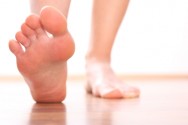 Stiff and persistent heel pain that is not easily supplemented with heel pads or mild painkillers often reveals itself to be plantar fasciitis. Treatment options for plantar fasciitis can involve other anti-inflammatory medications, physical therapy, stretching exercises, night splints, or cortisone injections. While each of these methods are effective, it is important to see a podiatrist or foot specialist who will properly examine the foot and determine the best treatment for each individual.
Stiff and persistent heel pain that is not easily supplemented with heel pads or mild painkillers often reveals itself to be plantar fasciitis. Treatment options for plantar fasciitis can involve other anti-inflammatory medications, physical therapy, stretching exercises, night splints, or cortisone injections. While each of these methods are effective, it is important to see a podiatrist or foot specialist who will properly examine the foot and determine the best treatment for each individual.
Anyone can wind up suffering from heel pain. If your heel is hurting, see one of our podiatrists of The Podiatry Center, P.C. Our podiatristswill treat your heel pain symptoms in addition to other podiatric-related needs.
Causes of Heel Pain
● Heel pain is often associated with plantar fasciitis. The plantar fascia is a band of tissues that extends along the bottom of the foot. A rip or tear in this ligament can cause inflammation of the tissue.
● Achilles tendonitis is another cause of heel pain. Inflammation of the Achilles tendon will cause pain from fractures and muscle tearing. Lack of flexibility is also another symptom.
● Heel spurs are another cause of pain. When the tissues of the plantar fascia undergo a great deal of stress, it can lead to ligament separation from the heel bone, causing heel spurs.
Why Might Heel Pain Occur?
- Wearing ill-fitting shoes
- Wearing non-supportive shoes
- Weight change
- Excessive running
Treatments
Heel pain should be treated as soon as possible for immediate results. Keeping your feet in a stress free environment will help. If you suffer from Achilles tendonitis or plantar fasciitis, applying ice will reduce the swelling. Stretching before an exercise like running will help the muscles. Using all these tips will help make heel pain a thing of the past.
With the advancements in technology and greater knowledge of how muscles and joints work, physical therapists can turn things around dramatically.
If you have any questions about arthritic foot care, please feel free to contact our office located in Millburn, NJ. We offer the newest diagnostic and treatment technologies for all your foot and ankle needs.
Reducing Symptoms Essential to Managing Arthritis
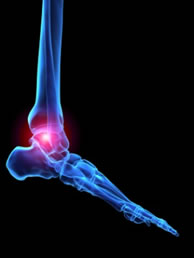 When it comes to arthritic foot care there is no definitive cure. However, reducing the symptoms and causes of inflammation are key in managing your arthritis. One of the major aspects of this pain management comes in the form of dieting: making sure you get the proper nutrients to help fight inflammation is paramount. Fish, and the omega-3 fatty acids contained in them, have jumped to the top of the list when it comes to combatting inflammation. Researchers have also found that broccoli, which contains sulforaphane, could help prevent or slow the progression of osteoarthritis. Lastly, heart-healthy oils that contain oleocanthal, which have similar properties to non-steroidal, anti-inflammatory drugs, are also highly recommended to those trying to fight the symptoms of arthritis.
When it comes to arthritic foot care there is no definitive cure. However, reducing the symptoms and causes of inflammation are key in managing your arthritis. One of the major aspects of this pain management comes in the form of dieting: making sure you get the proper nutrients to help fight inflammation is paramount. Fish, and the omega-3 fatty acids contained in them, have jumped to the top of the list when it comes to combatting inflammation. Researchers have also found that broccoli, which contains sulforaphane, could help prevent or slow the progression of osteoarthritis. Lastly, heart-healthy oils that contain oleocanthal, which have similar properties to non-steroidal, anti-inflammatory drugs, are also highly recommended to those trying to fight the symptoms of arthritis.
Arthritis can be a difficult condition to live with. If you are suffering from arthritic foot pain, contact one of our podiatrists of The Podiatry Center, P.C. Our podiatrists can treat your foot and ankle needs.
Arthritic Foot Care
Arthritis is a joint disorder that involves inflammation of different joints in your body, such as in your feet. Arthritis is often caused by a degenerative joint disease and causes mild to severe pain in all affected areas. On top of this, swelling and stiffness in the affected joints can also be a common symptom of arthritis.
In many cases, wearing ill-fitting shoes can worsen the effects and pain of arthritis. Wearing shoes that have a lower heel and extra room can help your feet feel more comfortable. In cases of rheumatoid arthritis, the arch in your foot may become problematic. Buying shoes with proper arch support that contour to your feet can help immensely.
Alleviating Arthritic Pain
- Exercises that stretch the foot can prevent further pain and injury and increase mobility
- Most of the pain can be alleviated with anti-inflammatory drugs, heat, and topical medications
- Massages can help to temporarily alleviate pain.
It is best to see your doctor for the treatment that is right for your needs and symptoms. Conditions vary, and a podiatrist can help you determine the right method of care for your feet.
If you have any questions about arthritic foot care, please feel free to contact our office located in Millburn, NJ. We offer the newest diagnostic and treatment technologies for all your foot and ankle needs.
Study Finds Patients in Rural Areas More Susceptible to Diabetic Foot Complications
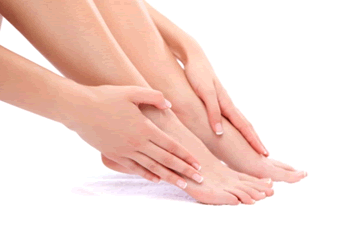 According to a study published in PLOS ONE, diabetic patients living in rural areas have a higher chance of a more problematic experience with diabetic foot ulcers. This includes an increase in hospital admittance and risk of major amputation. Research shows that those in rural areas with diabetic foot complications make up 1.9% of 55 million diabetic emergency visits and areas with lower incomes also had a higher risk of amputation.
According to a study published in PLOS ONE, diabetic patients living in rural areas have a higher chance of a more problematic experience with diabetic foot ulcers. This includes an increase in hospital admittance and risk of major amputation. Research shows that those in rural areas with diabetic foot complications make up 1.9% of 55 million diabetic emergency visits and areas with lower incomes also had a higher risk of amputation.
Diabetic foot care is important in preventing foot complications such as ulcers or amputation. If you are suffering from diabetes or have any other concerns about your feet contact one of our podiatrists of The Podiatry Center, P.C. Our doctor will diagnose and treat your foot and ankle needs.
Diabetic Foot Care
Diabetes affects millions of people every year. Diabetes can damage blood vessels in many parts of the body, including the feet. Because of this, taking care of your feet is essential if you have diabetes, and having a podiatrist help monitor your foot health is highly recommended.
The Importance of Caring for Your Feet
- Routinely inspect your feet for bruises or sores.
- Wear socks that fit your feet comfortably.
- Wear comfortable shoes that provide adequate support.
Patients with diabetes should have their doctor monitor their blood levels because blood sugar levels play such a huge role in diabetic care. Monitoring these levels on a regular basis is highly advised.
It is always best to inform your healthcare professional of any concerns you may have regarding your feet, especially for diabetic patients. Early treatment and routine foot examinations are keys to maintaining proper health, especially because severe complications can arise if proper treatment is not applied.
If you have any questions, please feel free to contact our office in Millburn, NJ. We offer the newest diagnostic and treatment technologies for all your foot and ankle needs.
Training Barefoot Strengthens Feet and Body
 Despite the apparent downhill interest in barefoot running, barefoot training in which you exercise and strengthen your feet through a barefoot exercise regimen is a good way to remain flexible and healthy. The other important thing that these barefoot drills do is increase gait pattern which affects the overall biomechanics of walking and running. Since off-kilter feet can lead to injuries in the legs, knees, and back, these barefoot drills have become a great tool to staying healthy and fit.
Despite the apparent downhill interest in barefoot running, barefoot training in which you exercise and strengthen your feet through a barefoot exercise regimen is a good way to remain flexible and healthy. The other important thing that these barefoot drills do is increase gait pattern which affects the overall biomechanics of walking and running. Since off-kilter feet can lead to injuries in the legs, knees, and back, these barefoot drills have become a great tool to staying healthy and fit.
Proper footwear is important for biomechanics, which incorporates the moving parts that manage the movement of your feet. To learn more about biomechanics, see one of our podiatrists from The Podiatry Center, P.C. Our doctors can provide you with the foot and ankle information you seek.
A History of Biomechanics
- Biomechanics dates back to the BC era in Egypt where evidence of professional foot care has been recorded.
- In 1974 biomechanics gained a higher profile from the studies of Merton Root, who claimed that by changing or controlling the forces between the ankle and the foot, corrections or conditions could be implemented to gain strength and coordination to the area.
Modern technology improvements are based on past theories and therapeutic processes providing a better understanding of podiatry concepts for biomechanics. Computers provide accurate determinations about the forces, moments and patterns of the foot and lower legs with the most important information captured.
Advances in materials and more awareness of biomechanics have developed enhanced corrective methods, offering further options for foot-related injuries. Understanding foot biomechanics can help improve and eliminate pain, stopping further stress to the foot.
If you have any questions, please contact our office located in Millburn, NJ. We offer the newest diagnostic and treatment technologies for all your foot care needs.
Increase in Morton’s Neuroma May be Due to High Heels
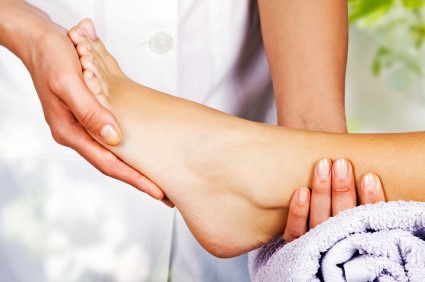 Within the past decade, more women have been admitted into the hospital with symptoms leading to Morton’s neuroma. Many scientists believe this spike is due to an increase in high heel usage especially in women ages 40 - 69. In fact, within the past ten years there has been a 115% increase in high heel related Morton’s neuroma treatment; 1,179 admitted women in 2005 and 2,523 admitted women in 2015. Since Morton’s neuroma affects the nerves that run between the toes, high heel shoes over five centimeters can become problematic by pushing the metatarsal bones against the nerves. Many suggest wearing shoes with a wider toe box and a lower heel to avoid this ailment.
Within the past decade, more women have been admitted into the hospital with symptoms leading to Morton’s neuroma. Many scientists believe this spike is due to an increase in high heel usage especially in women ages 40 - 69. In fact, within the past ten years there has been a 115% increase in high heel related Morton’s neuroma treatment; 1,179 admitted women in 2005 and 2,523 admitted women in 2015. Since Morton’s neuroma affects the nerves that run between the toes, high heel shoes over five centimeters can become problematic by pushing the metatarsal bones against the nerves. Many suggest wearing shoes with a wider toe box and a lower heel to avoid this ailment.
Morton’s Neuroma is a very uncomfortable condition to live with. If you think you have Morton’s neuroma contact one of our podiatrists of The Podiatry Center, P.C. Our doctors will treat your foot and ankle needs.
Morton’s Neuroma
Morton's neuroma is a painful foot condition that commonly affects the areas between the second and third or third and fourth toe, although other areas of the foot are also susceptible. Morton’s neuroma is caused by an inflamed nerve in the foot that is being squeezed and aggravated by surrounding bones.
What Increases the Chances of having Morton’s Neuroma?
- -Ill-fitting high heels or shoes that add pressure to the toe or foot
- -Jogging, running or any sport that involves constant impact to the foot
- -Flat feet, bunions, and any other foot deformities
Morton’s neuroma is a very treatable condition. Orthotics and shoe inserts can often be used to alleviate the pain on the forefront of the feet. In more severe cases, corticosteroids can also be prescribed. In order to figure out the best treatment for your neuroma, it’s recommended to seek the care of a podiatrist who can diagnose your condition and provide different treatment options.
If you have any questions please feel free to contact our office located in Millburn, NJ. We offer the newest diagnostic tools and treatments to treat your foot and ankle needs.
University of Michigan Loses Bryan Mone due to Broken Ankle
 University of Michigan loses their defensive tackle Bryan Mone due to a broken ankle sustained during practice. The sophomore player was excited to start the season, but will apparently not be able to participate since the injury was significant enough to keep him off the field for a long period of time. Initially sources and Mone’s coach refused to comment for the Wolverines player stating they wanted to keep him away from the media. However, the injury and Mone’s time off this season have since been confirmed.
University of Michigan loses their defensive tackle Bryan Mone due to a broken ankle sustained during practice. The sophomore player was excited to start the season, but will apparently not be able to participate since the injury was significant enough to keep him off the field for a long period of time. Initially sources and Mone’s coach refused to comment for the Wolverines player stating they wanted to keep him away from the media. However, the injury and Mone’s time off this season have since been confirmed.
Broken ankles need immediate treatment. If you have any concerns about your feet and ankles contact one of our podiatrists of The Podiatry Center, P.C. Our doctors will treat your foot and ankle needs.
Broken Ankles
A broken ankle is experienced when a person fractures their tibia or fibula in the lower leg and ankle area. Both of these bones are attached at the bottom of the leg and combine to form what we know to be our ankle.
When a physician is referring to a break of the ankle, he or she is usually referring to a break in the area where the tibia and fibula are joined to create our ankle joint. Ankles are more prone to fractures because the ankle is an area that suffers a lot of pressure and stress. There are some obvious signs when a person experiences a fractured ankle, and the following symptoms may be present.
Symptoms of a Fractured Ankle
- Excessive pain when the area is touched or when any pressure is placed on the ankle
- Swelling around the area
- Bruising of the area
- Area appears to be deformed
If you suspect an ankle fracture, it is recommended to seek treatment as soon as possible. The sooner you have your podiatrist diagnose the fracture, the quicker you’ll be on the way towards recovery.
If you have any questions please feel free to contact our office located in Millburn, NJ. We offer the newest diagnostic tools and technology to treat your foot and ankle needs.
Preventing Blisters for Events Such as Ironman Kona
 With the return of fall weather, it is important to get the feet prepared for blister prevention during the boot weather months. When purchasing shoes it always best to make sure you are getting the correct size and fit of the shoe. A shoe that is too tight will definitely cause blisters on the feet. Rubbing a blister block or silicone based hair serum on blister prone parts of the feet can help reduce friction if you already have shoes that are too tight. On the chance that you are unable to take the proper measures to prevent a blister and get one anyways, make sure to keep durable band aids on you to allow it to heal properly.
With the return of fall weather, it is important to get the feet prepared for blister prevention during the boot weather months. When purchasing shoes it always best to make sure you are getting the correct size and fit of the shoe. A shoe that is too tight will definitely cause blisters on the feet. Rubbing a blister block or silicone based hair serum on blister prone parts of the feet can help reduce friction if you already have shoes that are too tight. On the chance that you are unable to take the proper measures to prevent a blister and get one anyways, make sure to keep durable band aids on you to allow it to heal properly.
Blisters are prone to making everyday activities extremely uncomfortable. If you have any concerns with blisters on your feet contact one of our podiatrists of The Podiatry Center, P.C. Our doctors will treat your foot and ankle needs.
Foot Blisters
Foot blisters develop as a result of constantly wearing tight or ill-fitting footwear. This happens due to the constant rubbing from the shoe, which can often lead to pain.
What are Foot Blisters?
A foot blister is a small fluid-filled pocket that forms on the upper-most layer of the skin. Blisters are filled with clear fluid and can lead to blood drainage or pus if the area becomes infected.
How do Blisters Form?
Blisters on the feet are often the result of constant friction of skin and material, usually by shoe rubbing. Walking in sandals, boots, or shoes that don’t fit properly for long periods of time can result in a blister. Having consistent foot moisture and humidity can easily lead to blister formation.
Prevention & Treatment
It is important to properly care for the affected area in order to prevent infection and ease the pain. Do not lance the blister and use a Band-Aid to provide pain relief. Also, be sure to keep your feet dry and wear proper fitting shoes. If you see blood or pus in a blister, seek assistance from a doctor.
If you have any questions please feel free to contact our office located in Millburn, NJ. We offer the newest diagnostic tools and technology to treat your foot and ankle needs.
Honey Gives Advice from Personal Bunion Problems
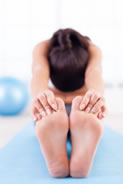 Honey Good, founder of lifestyle website HoneyGood.com recalls her experience on dealing with bunions and bunion surgery later in life. When the pain of bunions first erupted, Good received medical attention from four different doctors with four different opinions that ultimately resulted in bunion surgery. Although Good never went through with it since she already had surgery on her foot once and did not enjoy the experience, she has developed a few tips for women her age. Purchase shoes that are a size bigger or have a larger toe box in addition to putting an insert in your shoe that goes under the big toe. Good has also found that putting a one inch rubber wedge in between in her big toe and index toe helps relieve the pain. She also recommends having your shoes stretched professionally, so you can continue to wear your shoes in addition to keeping your feet healthy.
Honey Good, founder of lifestyle website HoneyGood.com recalls her experience on dealing with bunions and bunion surgery later in life. When the pain of bunions first erupted, Good received medical attention from four different doctors with four different opinions that ultimately resulted in bunion surgery. Although Good never went through with it since she already had surgery on her foot once and did not enjoy the experience, she has developed a few tips for women her age. Purchase shoes that are a size bigger or have a larger toe box in addition to putting an insert in your shoe that goes under the big toe. Good has also found that putting a one inch rubber wedge in between in her big toe and index toe helps relieve the pain. She also recommends having your shoes stretched professionally, so you can continue to wear your shoes in addition to keeping your feet healthy.
Bunion surgery usually occurs after non-surgical methods have proved to be ineffective. If you have any concerns about your feet or ankles contact one of our podiatrists of The Podiatry Center. Our doctors will treat your foot and ankle needs.
What is a Bunion?
A bunion is formed of swollen tissue or an enlargement of boney growth, usually located at the base joint of the toe that connects to the foot. The swelling occurs by the bones in the big toe shifting inward, which impacts the other toes of the foot. This causes the area around the base of the big toe to become inflamed and painful.
Why do Bunions Form?
- Genetics – susceptibility to bunions are often hereditary
- Stress on the feet – poorly fitted and uncomfortable footwear that places stress on feet, such as heels, can cause bunions to form
How are Bunions Diagnosed?
Doctors often perform two tests – blood tests and x-rays – when trying to diagnose bunions, especially in the early stages of development. Blood tests help determine if the foot pain is being caused by something else, such as arthritis, while x-rays provide a clear picture of your bone structure to your doctor.
How are Bunions Treated?
- Refrain from wearing heels or similar shoes that cause discomfort
- Select wider shoes that can provide more comfort and reduce pain
- Anti-inflammatory and pain management drugs
- Orthotics or foot inserts
- Surgery
If you have any concerns please feel free to contact our office located in Millburn, NJ. We offer the newest diagnostic tools and technology to treat your foot and ankle needs.
Laser Treatment Gaining Popularity in Reducing Toe Nail Fungus
 While toenail fungus is estimated to have an effect on nearly 35 million people worldwide, laser treatment for the condition has become increasingly popular. The treatment works by sending wavelengths of light through the nail bed to eliminate fungal spores. Since this occurs by delivering heat into the nail, patients often find warming or pinprick sensations in the area. According to Dr. Alap Shah, “The reason more people are going to it is because it’s preventing people from having to take some of these medications that can be toxic to the liver.”
While toenail fungus is estimated to have an effect on nearly 35 million people worldwide, laser treatment for the condition has become increasingly popular. The treatment works by sending wavelengths of light through the nail bed to eliminate fungal spores. Since this occurs by delivering heat into the nail, patients often find warming or pinprick sensations in the area. According to Dr. Alap Shah, “The reason more people are going to it is because it’s preventing people from having to take some of these medications that can be toxic to the liver.”
While toenail fungus is troublesome to eradicate, it is not impossible. For more information about treatment, consult with Dr. Howard Hyman of The Podiatry Center, P.C. Our doctor will attend to all of your podiatric needs.
Toenail Fungus Treatment
Toenail fungus is a problem which affects many people and is hard to get rid of. Fortunately, there are several methods to go about treating toenail fungus.
Antibiotics & Treatments
Lamisil – is the most commonly effective treatment for toenail fungus. It is available as an antibiotic Terbinafine tablet and cream. Terbinafine is a chemical component which kills fungal growth on the body. Applying regular doses will gradually kill the fungal growth. It is important to keep the area clean and air free.
Talcum powder – applying powder on the feet and shoes helps keep the feet free of moisture and sweat.
Sandals or open toed shoes – wearing these will allow air movement and help keep feet dry. They also expose your feet to light, which fungus cannot tolerate. Socks with moisture wicking material also help as well
Alternative Treatments
There are always surgical procedures that are available for toenail fungus. Some people would like immediate quick removal of toenail fungus. Surgeons will be able to cut through and remove the growth using laser surgery. It is important not to try and remove it yourself. Once removed, your old shoes will need to be replaced to avoid reinfection.
If you have any questions please feel free to contact our office located in Millburn, NJ. We offer the newest diagnostic tools and technology to treat your foot and ankle needs.
More...
The Best Ways to Avoid Heel Spurs
 Heel spurs occur when there is extreme strain on the heel bone and surrounding ligaments causing a calcium deposit on the heel bone. In order to avoid the painful condition many suggest to wear shoes that are your size, massage the feet after walking around in heels and consider switching to a flatter shoe, and stretch the feet. Additionally, running on hard surfaces or barefoot can increase risk of heel spurs. Avoid exerting too much pressure on the heels and get fitted for a proper running shoe to reduce chances of heel spurs forming.
Heel spurs occur when there is extreme strain on the heel bone and surrounding ligaments causing a calcium deposit on the heel bone. In order to avoid the painful condition many suggest to wear shoes that are your size, massage the feet after walking around in heels and consider switching to a flatter shoe, and stretch the feet. Additionally, running on hard surfaces or barefoot can increase risk of heel spurs. Avoid exerting too much pressure on the heels and get fitted for a proper running shoe to reduce chances of heel spurs forming.
Heel spurs can be incredibly painful, and sometimes might make you unable to participate in physical activities. To get medical care for your heel spurs, call one of our podiatrists of The Podiatry Center, P.C. Our doctors will do everything possible to treat your condition.
Heels Spurs
Heel spurs are formed by calcium deposits on the back of the foot where the heel is. This can also be a cause from small fragments of bone breaking off one section of the foot, attaching it to the back of the foot. Heel spurs can also be bone growth on the back of the foot. Bone may grow in the direction of the arch of the foot.
Older individuals usually suffer from heel spurs. Pain sometimes intensifies with age. Heel spurs are known to cause a substantial amount of pain. One of the main associations spurs are related to is plantar fasciitis.
Pain
The pain associated with spurs is often times because of weight placed on the feet. When someone is walking their entire weight is concentrated on the feet. Bone spurs then have the tendency to poke and affect other boners and tissues around the foot. As the pain continues the feet will become tender and sensitive over time.
Treatments
There are many ways to treat heel spurs. If one is suffering from heel spurs in conjunction with pain there are several methods for healing. Medicines, surgery, and herbal care are some options.
For more information about Heel Spurs, follow the link below.
If you have any questions feel free to contact our office in Millburn, NJ. We offer the latest in diagnostic and treatment technology to meet your needs.
Cracked Heels Can be Caused by Many Different Factors
 Cracked heels are a common foot ailment year round that can be caused by many different activities some of which most people may not even be aware of. While walking barefoot where your feet are exposed to dust and hard floors can cause heel cracking and those with conditions such as diabetes and arthritis are more susceptible to it. From the chemicals in the detergent to wash your clothes with to improper foot care or posture, there are many factors in cracked heels. Talking to a podiatrist is the best bet in healing your feet properly if you are suffering from the foot ailment.
Cracked heels are a common foot ailment year round that can be caused by many different activities some of which most people may not even be aware of. While walking barefoot where your feet are exposed to dust and hard floors can cause heel cracking and those with conditions such as diabetes and arthritis are more susceptible to it. From the chemicals in the detergent to wash your clothes with to improper foot care or posture, there are many factors in cracked heels. Talking to a podiatrist is the best bet in healing your feet properly if you are suffering from the foot ailment.
Cracked heels can become painful if left untreated. To learn more, consult with one of our podiatrists of The Podiatry Center, PC. Our doctors will attend to all of your foot and ankle needs.
The Truth about Cracked Heels
Cracked Heels
Cracked heels are unappealing, and make it harder for you walk around in sandals. Not only may they look bad, but they can also tear stockings, socks, and wear out your shoes. There are several methods to help restore a cracked heel and prevent further damage.
How do you get them?
Dry skin is the number one culprit in creating cracked heels. Many athletes, walkers, joggers, and even swimmers suffer from cracked heels. Age and skin oil production play a role to getting cracked heels as well.
Promote Healing
Over the counter medicines can help, especially for those that need instant relief, or who suffer from chronic dry feet.
Wear Socks – wearing socks with medicated creams, helps lock in moisture so it can stay on longer.
Moisturizers – applying it both day and night will help alleviate dryness which causes cracking.
Pumice Stones – these remove dead skin, and then you can massage cream onto your foot. This way the cream will be absorbed. The skin needs to be exfoliated; therefore the outer layer dead skin needs removal.
If you have any questions, please feel free to contact our office located in Millburn, NJ. We offer the newest diagnostic tools and technologies for your foot and ankle needs.
Company Creates New Procedure to Fix Flat Feet
 Tyber Medical LLC has created a new implant procedure designed to treat flat feet. Branded the “Ty-Wedge Opening Osteotomy Wedge System,” the new device just recently received approval to aid in creating arches in flat feet. Flat feet are a common foot condition and when it becomes problematic, most individuals will use orthotics or surgery to fix it. The Ty-Wedge is made of plastic titanium and is surgically inserted into the foot bone. CEO Jeff Tyber expects the device will launch later this year.
Tyber Medical LLC has created a new implant procedure designed to treat flat feet. Branded the “Ty-Wedge Opening Osteotomy Wedge System,” the new device just recently received approval to aid in creating arches in flat feet. Flat feet are a common foot condition and when it becomes problematic, most individuals will use orthotics or surgery to fix it. The Ty-Wedge is made of plastic titanium and is surgically inserted into the foot bone. CEO Jeff Tyber expects the device will launch later this year.
Flat feet are not always problematic. If you are experiencing problems with the condition, speak to one of our podiatristsof The Podiatry Center. Our doctors will answer any of your foot and ankle related questions and attend to all of your podiatric needs.
What are Flat Feet?
Flat feet are a condition in which the arch of the foot is depressed and the sole of the foot is almost completely in contact with the ground. Standing about 20-30% of the population generally has flat feet because their arch never formed during growth.
Conditions & Problems:
Having flat feet makes it difficult to run or walk because of the stress placed on the ankles.
Alignment – The general alignment of your legs can be disrupted, because the ankles move inward which can cause major discomfort.
Knees – if you have complications with your knees, flat feet can be a contributor to arthritis in that area.
Symptoms:
Pain around the heel or arch area
Trouble standing on the tip toe.
Swelling around the inside of the ankle.
Flat look to one or both feet.
Having your shoes feel uneven when worn
Treatment:
If you are experiencing pain and stress on the foot you may weaken the posterior tibial tendon, which runs around the inside of the ankle.
If you have any questions please feel free to contact our office located in Millburn, NJ. We offer the newest diagnostic tools and treatments for your foot and ankle needs.
Seniors Around the Country Gather for the National Senior Games Despite Past Injuries
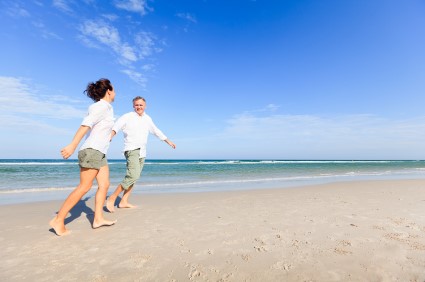 This past July the Minneapolis metro area hosted the 2015 National Senior Games where nearly 12,000 seniors ages 50 and older completed in high activity events such as basketball, swimming, and volleyball. Despite many of these participants having previously suffered from foot and ankle injuries, making them even more susceptible to injury at this stage, the event was still a success. Health professionals do recommend, however, that seniors take extra precautions when participating in high impact activities such as tennis, golf, or running since these activities can have negative influences on the lower extremities.
This past July the Minneapolis metro area hosted the 2015 National Senior Games where nearly 12,000 seniors ages 50 and older completed in high activity events such as basketball, swimming, and volleyball. Despite many of these participants having previously suffered from foot and ankle injuries, making them even more susceptible to injury at this stage, the event was still a success. Health professionals do recommend, however, that seniors take extra precautions when participating in high impact activities such as tennis, golf, or running since these activities can have negative influences on the lower extremities.
Proper foot care is something many older adults forget to consider. For more information, consult with one of our podiatrists from The Podiatry Center, P.C. Our doctor will assist you with all of your podiatric concerns.
The Elderly and their Feet
As we age we start to notice many changes in our body, but the elder population may not notice them right away. Medical conditions may prevent the elderly to take notice of their foot health right away. Poor vision is a lead contributor to not taking action for the elderly.
Common Conditions
Neuropathy – can reduce feeling in the feet, and can hide many life threating medical conditions.
Reduced flexibility – prevents the ability of proper toenail trimming, and foot cleaning. If left untreated, it may lead to further medical issues.
Foot sores – amongst the older population can be serious before they are discovered. Some of the problematic conditions they may face are:
Gouging toenails affecting nearby toe
Shoes that don’t fit properly
Pressure sores
Loss of circulation in legs & feet
Edema & swelling of feet and ankles
Susceptible Infections
Diabetes and poor circulation can cause general loss of sensitivity over the years, turning a simple cut into a serious issue.
If you have any questions please contact our office located in Millburn, NJ. We offer the newest diagnostic and treatment technologies for all your foot and ankle needs.
Blog Archives
- June 2025
- May 2025
- April 2025
- March 2025
- February 2025
- January 2025
- December 2024
- November 2024
- October 2024
- September 2024
- August 2024
- July 2024
- June 2024
- May 2024
- April 2024
- March 2024
- February 2024
- January 2024
- December 2023
- November 2023
- October 2023
- September 2023
- August 2023
- July 2023
- June 2023
- May 2023
- April 2023
- March 2023
- February 2023
- January 2023
- December 2022
- November 2022
- October 2022
- September 2022
- August 2022
- July 2022
- June 2022
- May 2022
- April 2022
- March 2022
- February 2022
- January 2022
- December 2021
- November 2021
- October 2021
- September 2021
- August 2021
- July 2021
- June 2021
- May 2021
- April 2021
- March 2021
- February 2021
- January 2021
- December 2020
- November 2020
- October 2020
- September 2020
- August 2020
- July 2020
- June 2020
- May 2020
- April 2020
- March 2020
- February 2020
- January 2020
- December 2019
- November 2019
- October 2019
- September 2019
- August 2019
- July 2019
- June 2019
- May 2019
- April 2019
- March 2019
- February 2019
- January 2019
- December 2018
- November 2018
- October 2018
- September 2018
- August 2018
- July 2018
- June 2018
- May 2018
- April 2018
- March 2018
- February 2018
- January 2018
- December 2017
- November 2017
- October 2017
- September 2017
- August 2017
- July 2017
- June 2017
- May 2017
- April 2017
- March 2017
- February 2017
- January 2017
- December 2016
- November 2016
- October 2016
- September 2016
- August 2016
- July 2016
- June 2016
- May 2016
- April 2016
- March 2016
- February 2016
- January 2016
- December 2015
- November 2015
- October 2015
- September 2015
- August 2015
- July 2015
- June 2015
- May 2015
- January 2014
- December 2013
- November 2013
- October 2013
- September 2013
- August 2013
- July 2013
- June 2013
- May 2013
- April 2013
- March 2013
- February 2013
- January 2013
- December 2012
- November 2012
- October 2012
- September 2012
- August 2012
- July 2012
- June 2012
